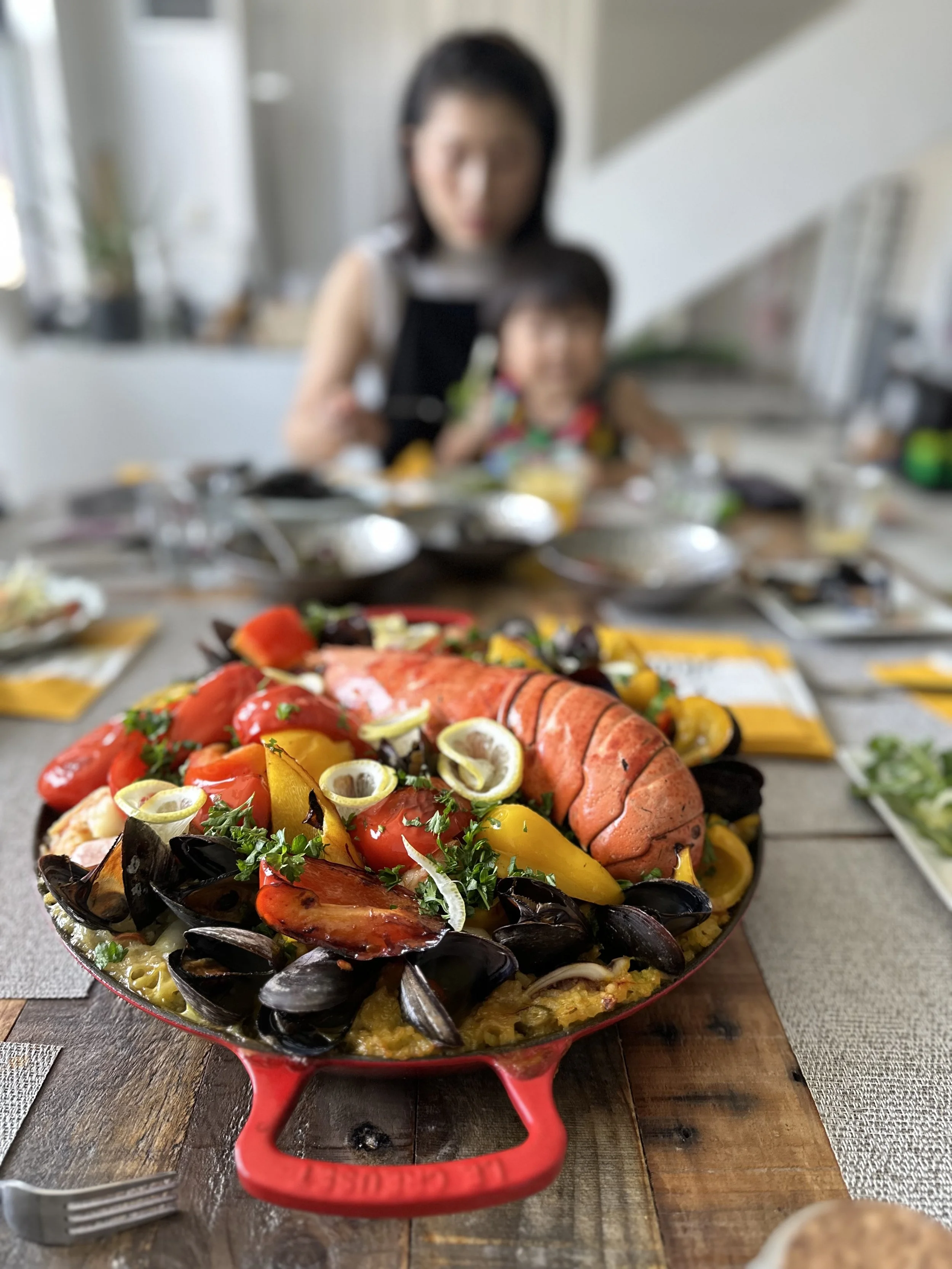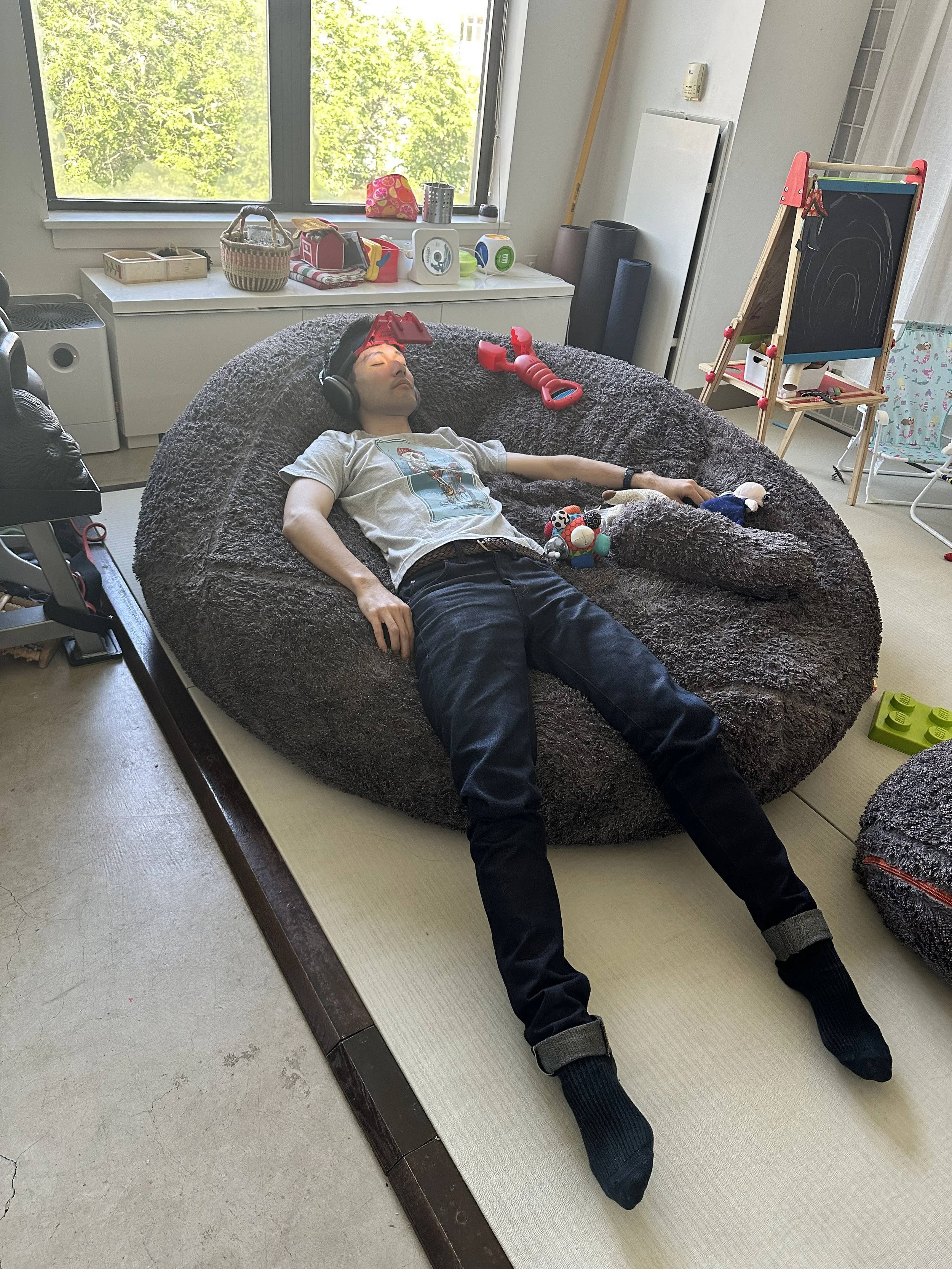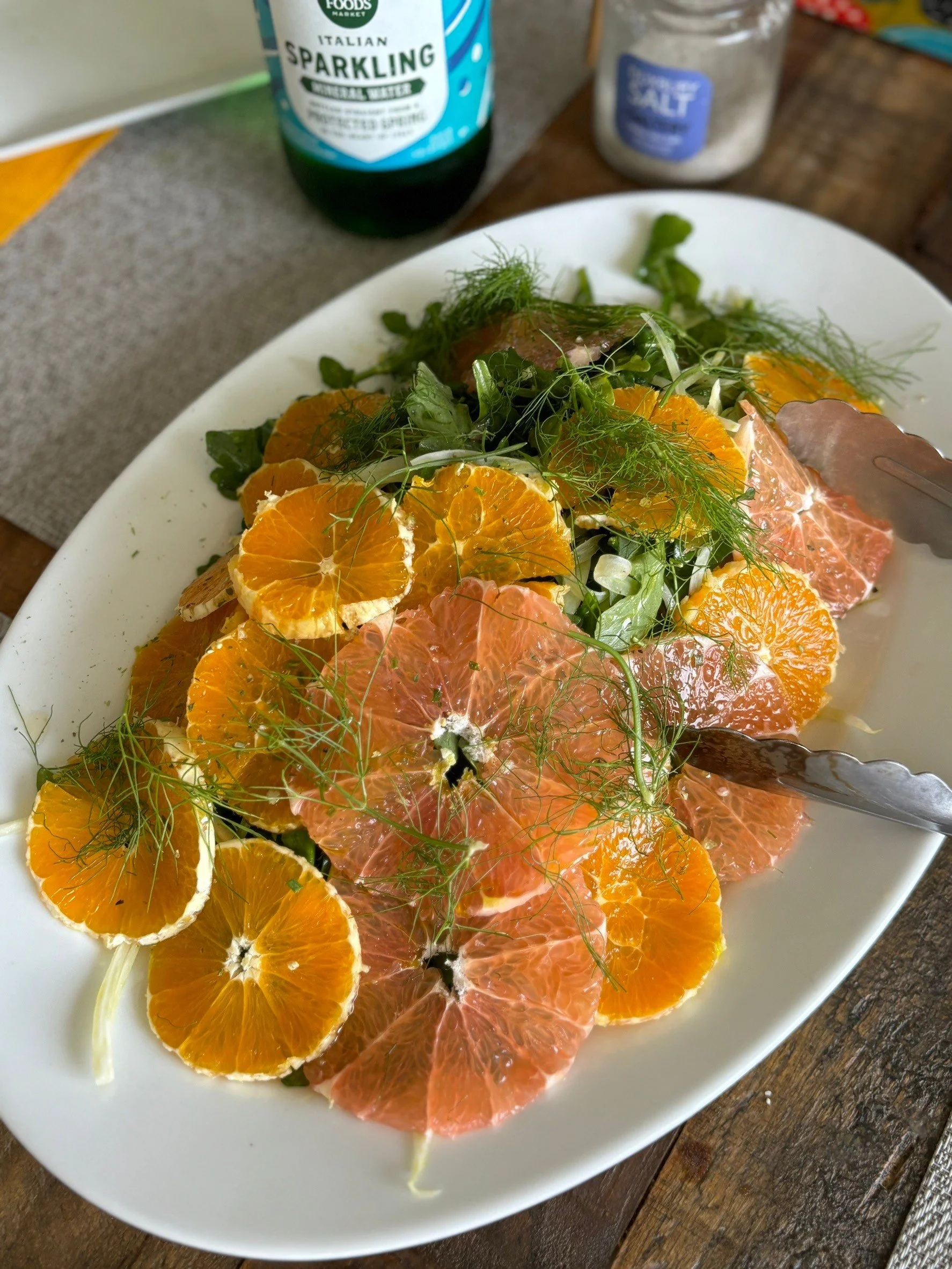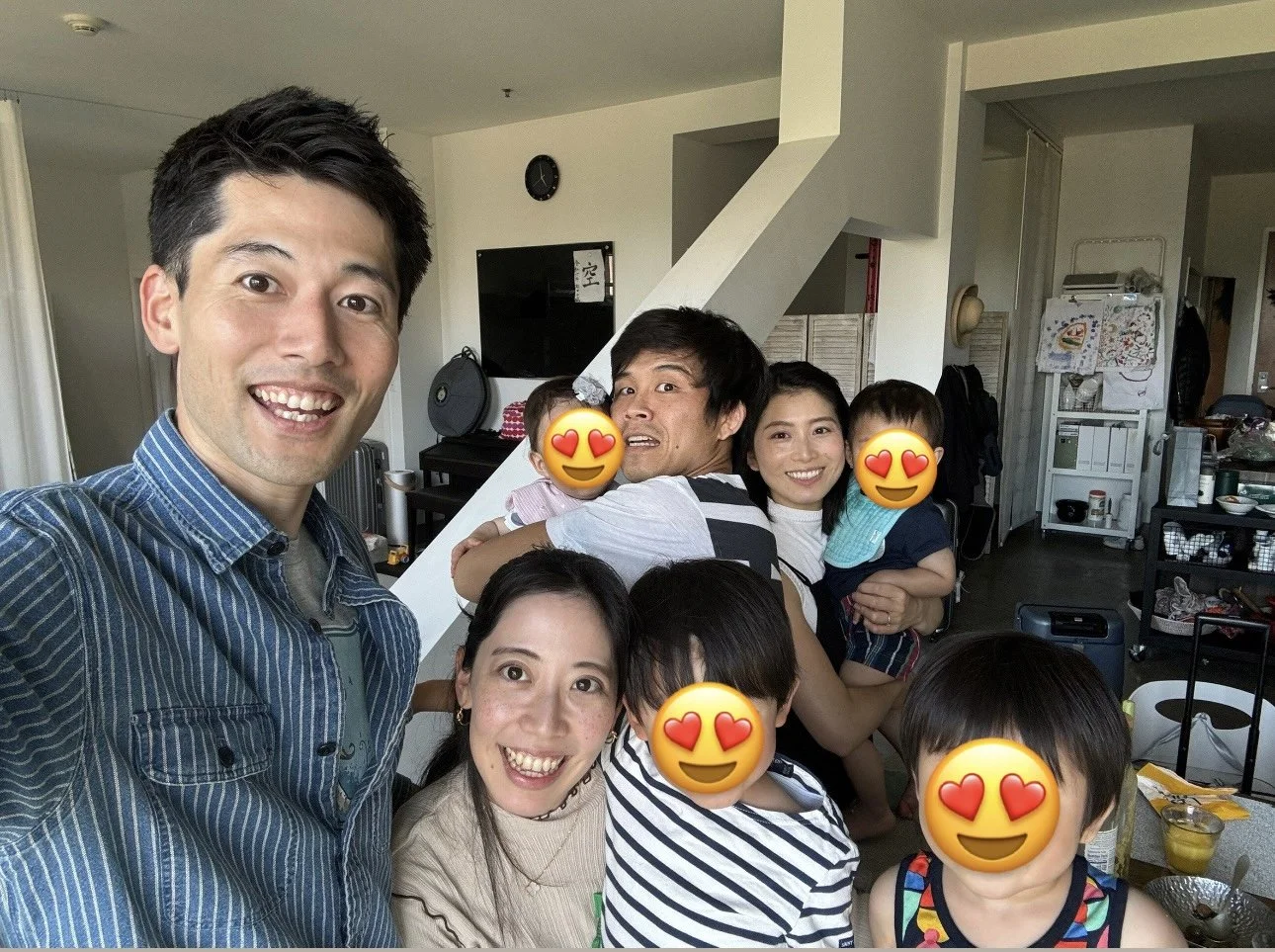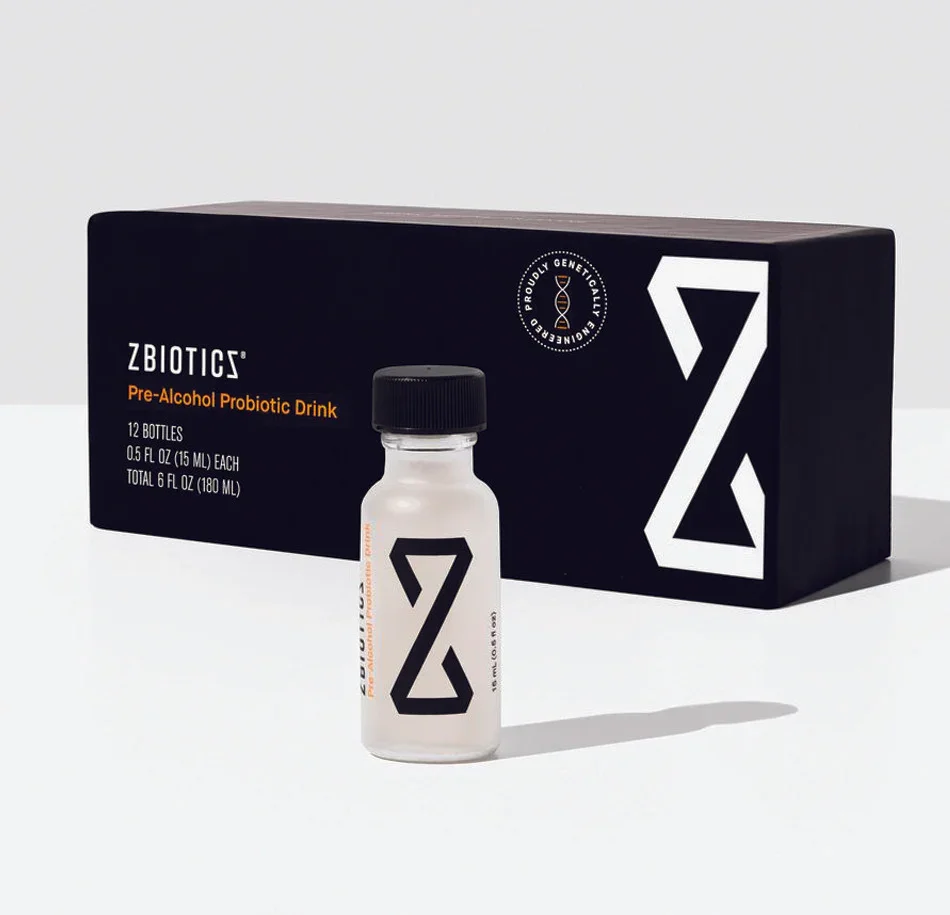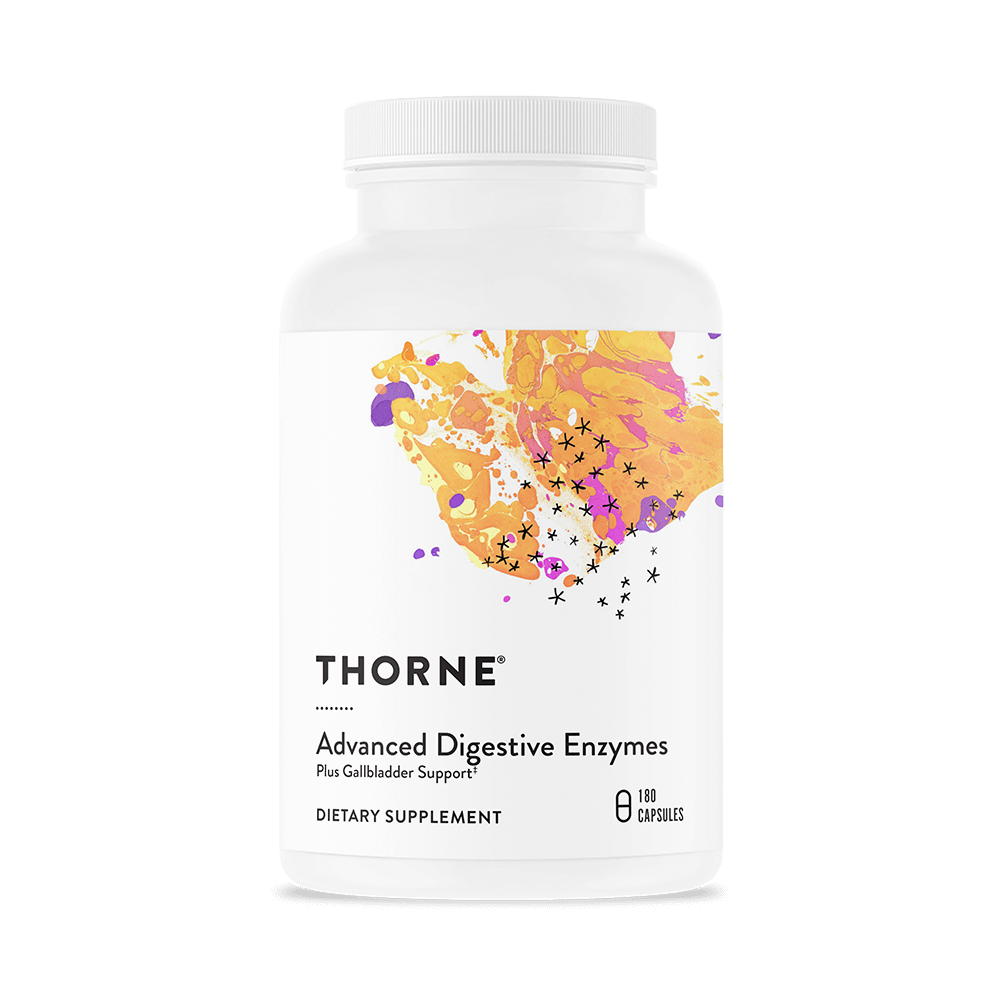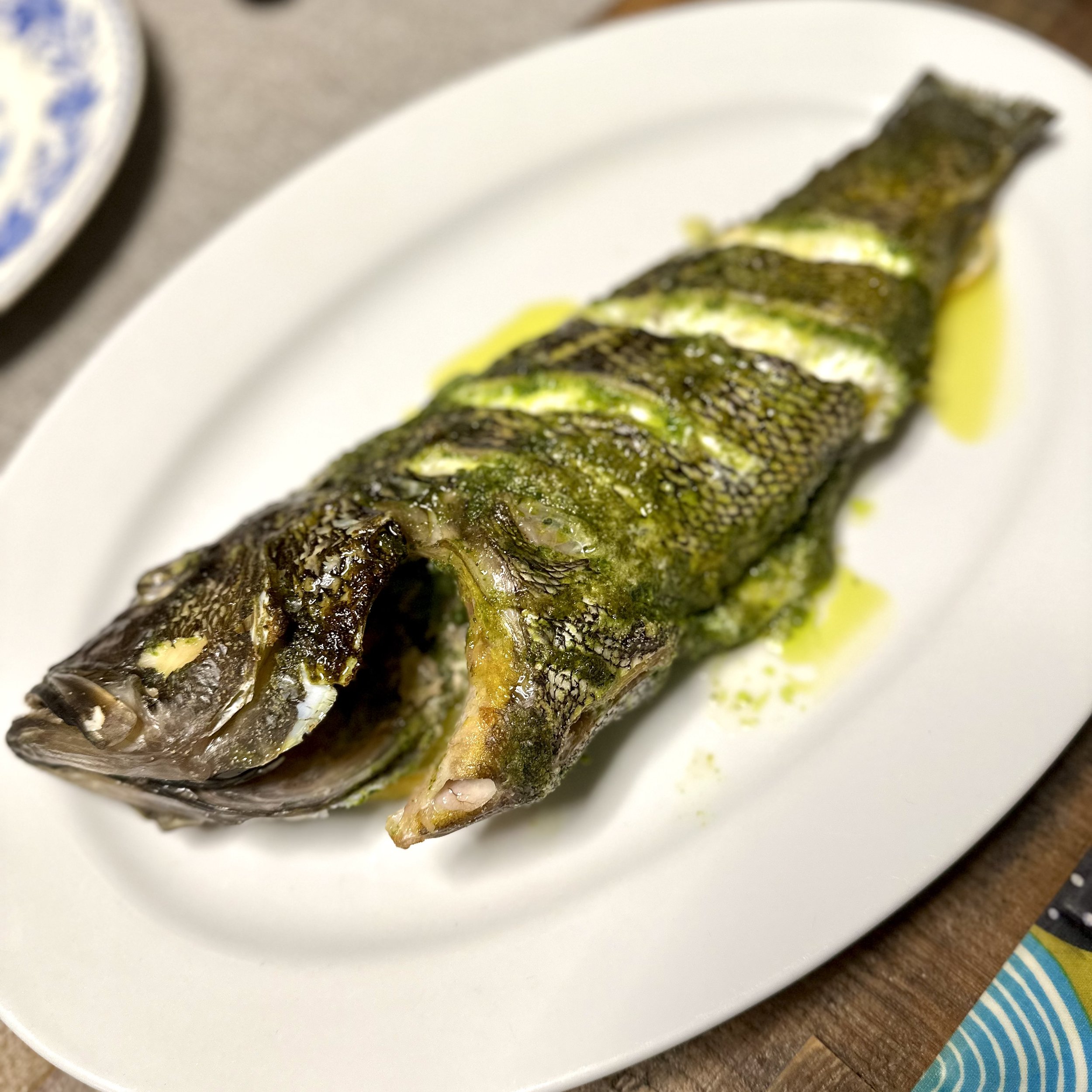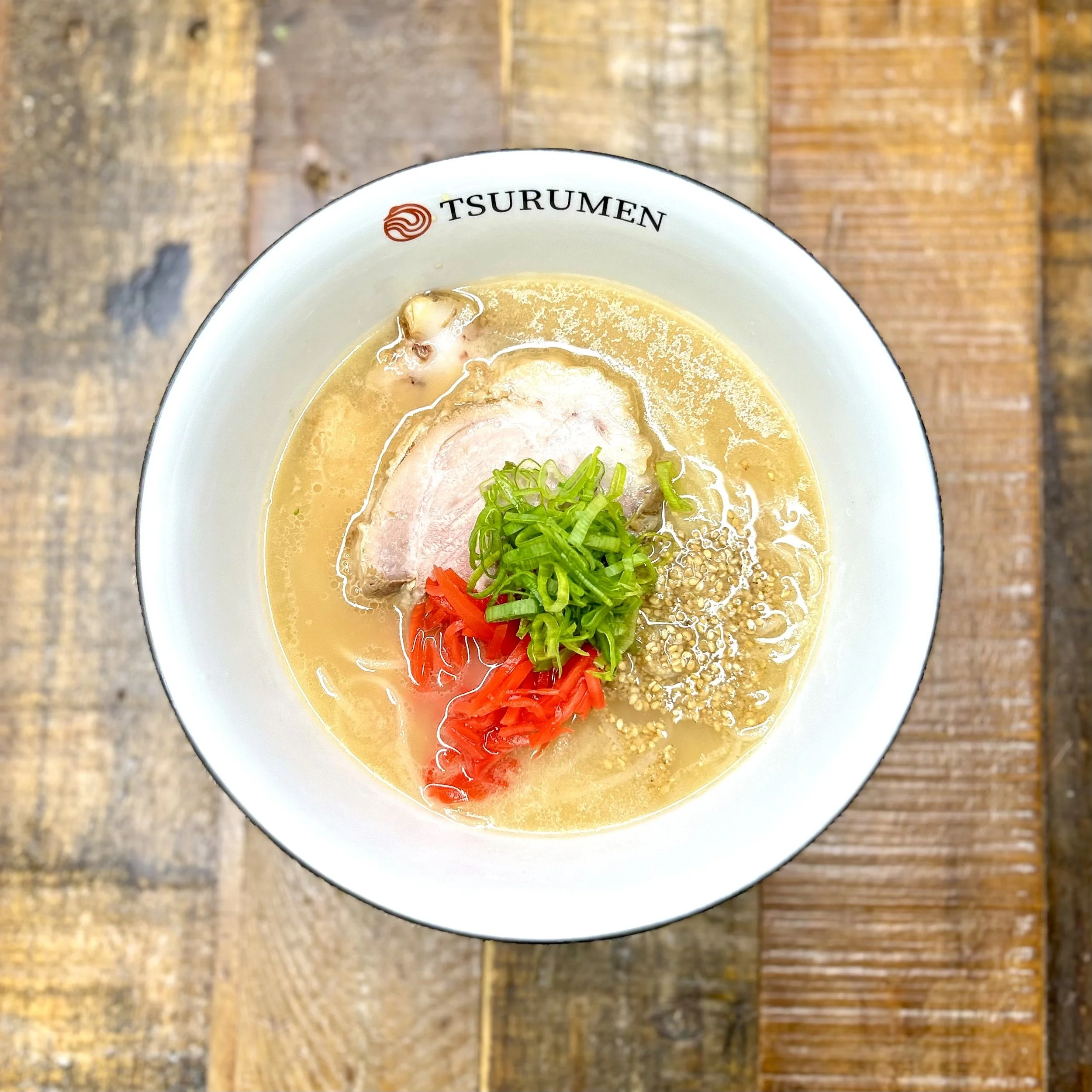The Boston Paella
Boston Paella
The Boston Paella: When Farewell Means Feeding Everyone You Love
The lobster is sitting on top of the paella. Bright red. Mussels arranged around it like a crown. Lemon slices, roasted peppers, fresh herbs. My daughter's best friend and his family are leaving Boston. Going back to Japan. And I wanted to give them something they'd remember.
Something BOSTON.
So I made paella. With a whole lobster in the middle.
Why Paella for a Japanese Family?
Here's the thing about living abroad - you collect these moments. These meals. These gatherings with families who understand what it's like to raise kids far from home.
My daughter became best friends with this boy from Japan. Our families got close. Playdates turned into lunchs. lunchs turned into celebrations. These are the people who GET IT - the challenge of keeping your kids connected to both cultures, the loneliness sometimes, the beauty of building community in a new place.
When they told us they were moving back to Japan, I knew immediately what I wanted to do. Cook something big. Something that brings people together. Something unmistakably BOSTON.
Paella checks all the boxes. It's a gathering dish - you cook it in one pan, everyone eats together, it's meant to be shared. And lobster? That's Boston in one ingredient. When people think of Massachusetts seafood, they think LOBSTER.
But here's what I didn't expect: I ended up giving the father an unexpected biohacking session while the paella was cooking.
The Cooking Marathon Meets Neuroscience
I started prep early. Paella isn't complicated, but it takes TIME and attention. I had my red paella pan ready - the real deal, not some knockoff. If you're going to do this, you need the right equipment.
First, the sofrito base - onions, garlic, tomatoes. Building flavor from the ground up. The smell started filling the kitchen immediately. My wife was setting up plates. The kids were running around, excited because they knew something special was happening.
Then the rice. Bomba rice if you can get it, but I used a good short-grain rice. The key is the RATIO - rice to liquid, the timing. You want that socarrat (the crispy bottom) but not burnt rice.
While I was layering flavors, I wanted to biohack the father of Lumi’s friend.
"Sit down," I told him. "Just relax. The paella needs time anyway."
"Have you ever tried light therapy for your brain?" I asked.
He looked confused. "What?"
I brought out my NeuroVizr. It looks like VR goggles, but instead of virtual reality, it uses specific light patterns to stimulate your brain. It's based on neuroscience research - different frequencies of light can influence your brainwave states. Think of it like meditation, but your brain is being GUIDED by the light patterns.
"Lie down on the bean bag," I said. "Just try it for 15 minutes while I finish the paella. Trust me."
I set him up with a relaxation protocol on the NeuroVizr and went back to cooking.
NeuroVizr in progress
The Transformation
While I was building the paella - adding the saffron-infused stock, arranging the seafood, getting everything perfect - I kept glancing over at him.
The first 5 minutes, he was fidgeting. Still IN his head. Still thinking about everything.
Then around minute 10, his breathing changed. Slower. Deeper.
By minute 15, he was GONE. Not asleep exactly, but in that state between waking and sleeping. That theta brainwave state where your body does deep recovery work.
My wife came into the kitchen, saw him, and whispered, "What did you do to him?"
"Biohacked him," I said with a grin.
When the 20-minute session ended and he took off the goggles, he just lay there for another minute. Then he sat up slowly.
"Tateki-san... what WAS that?"
"How do you feel?" I asked.
He paused. "I feel... clear. Like someone cleaned my brain."
EXACTLY. That's what NeuroVizr does when you're that stressed. It basically forces your nervous system to downregulate. Your brain follows the light patterns, entrains to the frequencies, and shifts out of sympathetic (stress) mode into parasympathetic (rest and recovery).
He looked at me differently after that. Like I'd just shown him something he didn't know existed.
"We need this in Japan," he said seriously.
Building the Boston Beast
The seafood went in stages. Mussels first, so they could steam open in the rice. Then the peppers - I roasted them beforehand, got that char, that sweetness. The lobster went on top at the end - already cooked, just needs to warm through and look MAGNIFICENT.
I used fresh herbs from farmer’s market. Parsley, because that's traditional. The lemon slices - not just for looks, you squeeze them over everything at the end.
When it came out of the oven (yeah, I finished it in the oven for even heat), the whole kitchen stopped. That SMELL. That LOOK. The bright red lobster on top of golden rice, black mussels, yellow and red peppers.
My daughter and her friend came running. "WHOA."
The Japanese family came in. The mom put her hand over her mouth. "Tateki-san... this is beautiful."
But here's the secret - I also made a side salad. Citrus and fennel with arugula. Because paella is RICH, and you need something bright and acidic to cut through it. Mixed citrus - oranges, grapefruit - sliced thin with shaved fennel and fresh dill.
That combination? The sweet, briny paella with the bright, bitter salad? PERFECT.
The Table
Both families sat together. My kids, their kids, my wife, their parents. We passed plates. Everyone got lobster pieces. The kids fought over the mussels - they LOVED them.
We ate with our hands. Lobster requires it. No pretense. Just good food, good people, and the knowledge that this moment matters.
The mom kept saying "Oishii, oishii" (delicious). The father, who's usually reserved and still thinking about work stuff, was pulling meat from the lobster tail with his fingers, smiling, PRESENT.
He looked different. Relaxed. Like that NeuroVizr session had given him permission to actually ENJOY the moment instead of thinking about the next thing.
At one point he leaned over to me and said quietly, "I haven't felt this calm in months. Thank you."
What This Meal Actually Meant
The food was great. The lobster was perfect. The paella had that socarrat on the bottom that everyone fought over.
But what stayed with me was THIS: when someone leaves, you want to give them something to remember. Not just a meal, but an EXPERIENCE. Something that says "You mattered here. Your family mattered to our family."
Paella does that. It's communal. It's generous. It's bold. It says "We're celebrating you."
And using Boston lobster? That was intentional. I wanted them to take the TASTE of Boston back to Japan. So when they think of Massachusetts, they don't just think of cold winters and American suburbs. They think of this meal. This gathering. This moment.
As for the father? That NeuroVizr session combined with the meal was something he'll remember. Sometimes the best gift you can give someone isn't just food - it's showing them there are tools and technologies that can help them manage stress, recover better, optimize their nervous system.
-
2025
- Nov 2, 2025 thanksgiving 2025
- Feb 14, 2025 Baked Pesto Black Sea Bass
- Jan 31, 2025 Veal with Maitake Cream Sauce
- Jan 1, 2025 Osechi 2025
-
2024
- Dec 25, 2024 French Cassoulet 2024
- Nov 28, 2024 Thanksgiving 2024
- Nov 2, 2024 Tonkotsu Ramen
- Oct 6, 2024 Pork Chop with New England Apple Sauce
- Sep 27, 2024 Tsukemen: The Dipping Noodle
- Sep 6, 2024 Chicken Paitan Ramen Yeah K style
- Aug 14, 2024 New England Shio Ramen
- Jul 14, 2024 Miso Tanmen
- Jun 20, 2024 Chashu Pork & Chicken Oil: The Secret to Restaurant-Quality GF Ramen at Home
- Jun 16, 2024 The Boston Paella
- May 4, 2024 Beef Tongue Stew
- Apr 25, 2024 Classic Gluten-free chicken shoyu ramen
- Feb 22, 2024 Vegan Gluten-Free Ramen
- Jan 31, 2024 Grilled Artichoke Salad with a sprinkle of reindeer bone broth
- Jan 1, 2024 Osechi 2024
-
2023
- Dec 25, 2023 French Cassoulet 2023
- Dec 24, 2023 Christmas Eve Duck Breast
- Nov 29, 2023 Thanksgiving 2023
- Sep 24, 2023 Roast Beef Bowl
- Jul 4, 2023 Black Ink Paella
- Jun 17, 2023 Ribeye Steak at a campsite
- May 14, 2023 Biceps Rissoto
- Feb 14, 2023 Chicken Confit
- Jan 31, 2023 Wild Boar with Wagyu Ragù
- Jan 8, 2023 Lobster and Salmon Roe Pasta
- Jan 7, 2023 “Okuizome” (first meal) for Lui
- Jan 1, 2023 Osechi 2023
-
2022
- Dec 25, 2022 French Cassoulet 2022
- Dec 24, 2022 Duck breast marmalade
- Nov 24, 2022 Thanksgiving 2022
- Nov 19, 2022 Buffalo Testicle
- Nov 6, 2022 Meal Prep for my Family
- Aug 21, 2022 Pescatore Boston
- Aug 14, 2022 Mussels Italian Style
- Aug 12, 2022 Steak with foie gras
- Jan 31, 2022 Capon Covered with Caul Fat
- Jan 1, 2022 Osechi 2022
-
2021
- Dec 25, 2021 French Cassoulet 2021
- Dec 24, 2021 Duck breast Balsamic vinegar glaze
- Nov 25, 2021 Thanksgiving 2021
- Sep 18, 2021 Pigeonneau (squab)
- Sep 12, 2021 Summer Salad
- Jul 25, 2021 Bison Bulgogi
- Jul 18, 2021 Bison Bolognese
- Jul 4, 2021 Epic Surf & Turf
- Jun 26, 2021 OMAD
- May 7, 2021 Pan Seared Pork Chops
- Apr 25, 2021 Rice malt marinated NY strip steak
- Apr 17, 2021 Pasta & Salad
- Mar 6, 2021 Lamb Ribs with Blackcurrant sauce
- Mar 3, 2021 Chicken with Mustard Butter Sauce
- Feb 26, 2021 Joi's Ginisang Pechay with Ground Pork and Shrimp
- Feb 14, 2021 “Okuizome” (first meal) for Lumi
- Jan 31, 2021 Slow Braised Wild Bore
- Jan 1, 2021 Osechi 2021
-
2020
- Dec 25, 2020 French Cassoulet 2020
- Dec 24, 2020 Sauteed Duck breast with Foie Gras
- Nov 26, 2020 Thanksgiving 2020
- Sep 20, 2020 Buffalo Testicles Stew
- Aug 16, 2020 Beef Tongue Stew
- Jun 16, 2020 Kitchari Cleanse
- May 9, 2020 Tagliatelle con Gamberi e Melanzane
- Feb 15, 2020 Pasta Negra con Langostinos
- Feb 14, 2020 Salted Cod on Carrot Purée
-
2019
- Dec 28, 2019 New England Favorite
- Nov 28, 2019 Thanksgiving 2019
- Aug 4, 2019 Buffalo Spleen
- May 12, 2019 Pichania
- Mar 29, 2019 Probiotic Sour Soup
- Feb 14, 2019 Uni carbonara
- Jan 31, 2019 Faisan rôti
-
2018
- Nov 23, 2018 Thanksgiving 2018
- Oct 22, 2018 Short Rib or Vegan Bolognese
- Jun 18, 2018 Meatless Monday
- May 5, 2018 Venison Medley
- Jan 31, 2018 Beef tongue
- Jan 1, 2018 New year 2018
-
2017
- Dec 25, 2017 Cassoulet
- Nov 20, 2017 Fermented Foods
- Sep 2, 2017 Crépinette
- Jul 16, 2017 Sourdough Bread
- May 7, 2017 Kombucha Challenge
- Apr 28, 2017 Keto Meal Ideas
- Apr 3, 2017 Miracle Noodles
- Jan 31, 2017 Braised lamb belly
- Jan 7, 2017 Venison Steak
-
2016
- Dec 9, 2016 Beaujolais nouveau & Venison
- Oct 16, 2016 Gibier and Bordeaux
- Sep 20, 2016 Lapin Braisé à la Bière
- Jul 16, 2016 Opus One 2008
- Jul 3, 2016 Meatless Meatball
- Jul 1, 2016 Paleo Friendly Plate
- May 22, 2016 Le Fromage de Tête
- May 6, 2016 Gluten Free Challenge 4
- Apr 28, 2016 Spaghetti Squash
- Apr 21, 2016 Intermittent Fasting
- Apr 16, 2016 Potée
- Apr 14, 2016 Sauerkraut
- Mar 27, 2016 Gluten Free Challenge 3
- Mar 18, 2016 Detox Pasta
- Feb 24, 2016 COTELETTES D'AGNEAU
- Feb 21, 2016 Ratatouille
- Feb 9, 2016 Atelierkitchen Zen 3
- Jan 21, 2016 Galette for Cheat Meal
- Jan 14, 2016 Zucchini Pasta
-
2015
- Nov 30, 2015 Filet de Canard à la grenade
- May 24, 2015 Osso Bucco lamb shank
- May 7, 2015 Paella de Quinoa
- Apr 7, 2015 Gluten Free Challenge 2
- Mar 31, 2015 Gluten Free Challenge
- Mar 17, 2015 Atelierkitchen Zen 2
- Mar 11, 2015 Fegatto di Vittello al burro all'aglio
-
2014
- Oct 17, 2014 Atelierkitchen Zen
- Sep 15, 2014 Duck Again!
- Aug 18, 2014 Duck is the best
- Jun 16, 2014 Caramelized Pork belly
- Jun 9, 2014 Monkfish Risotto
- May 27, 2014 Summer Vegetables Curry
- May 15, 2014 Beef achilles
- May 8, 2014 Crystal Clear Ramen
- Feb 3, 2014 Choux farci au Saumon (Salmon stuffed Cabbage)
-
2013
- Jun 13, 2013 Chicken with Avocado Pesto
- Apr 1, 2013 Manitas de cerdo guisadas
- Mar 20, 2013 Fiber Madness Marinara Sauce
-
2012
- Nov 11, 2012 Pumpkin Carbonara
- Sep 22, 2012 Pate de Fois
- Sep 12, 2012 Pulpo a la Gallega
- Sep 7, 2012 Lemon Garlic Pasta with Chicken, Red and Green
- Sep 6, 2012 Shrimp and Eggplant with Spicy tomato
- Jul 26, 2012 Black ink Pasta with Shrimp and Scallop
- Jul 19, 2012 Lobster Pasta with Tomato Cream Pasta
- Jun 16, 2012 Ragu alla Bolognese
- Jun 16, 2012 Bolognese with Eggplant
- Jun 6, 2012 Spaghetti alla Puttanesca
- Jun 4, 2012 Homemade Sangria
- May 20, 2012 Spring Vegetable with Cream sauce Pasta
- May 15, 2012 Carbonara
- May 9, 2012 Risotto di Vongole e Fungi
- Mar 28, 2012 Squid and Sea Urchin with Lemon Pasta
- Mar 28, 2012 Luxury Seafood with Tomato Cream Pasta
- Mar 19, 2012 Linguine alle Vongole Rosso
- Mar 18, 2012 Linguine alle Vongole Bianco

